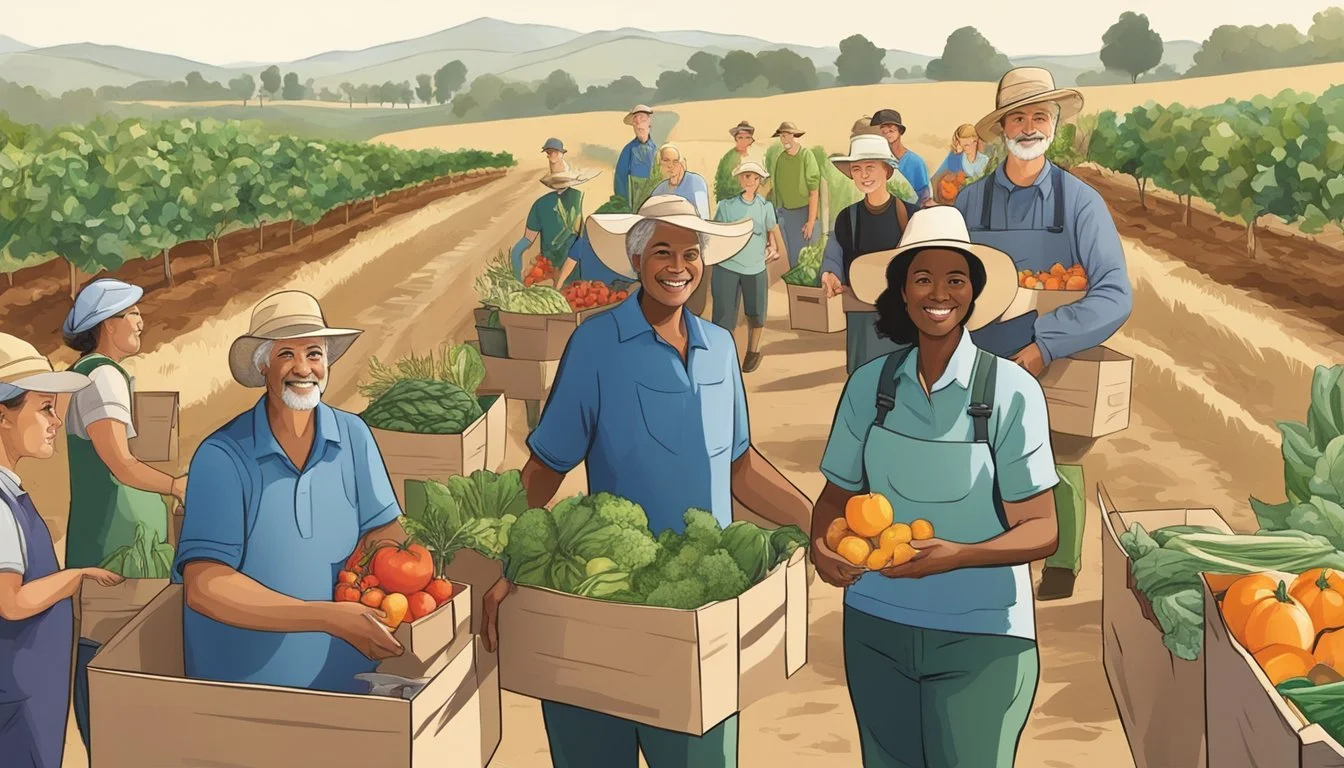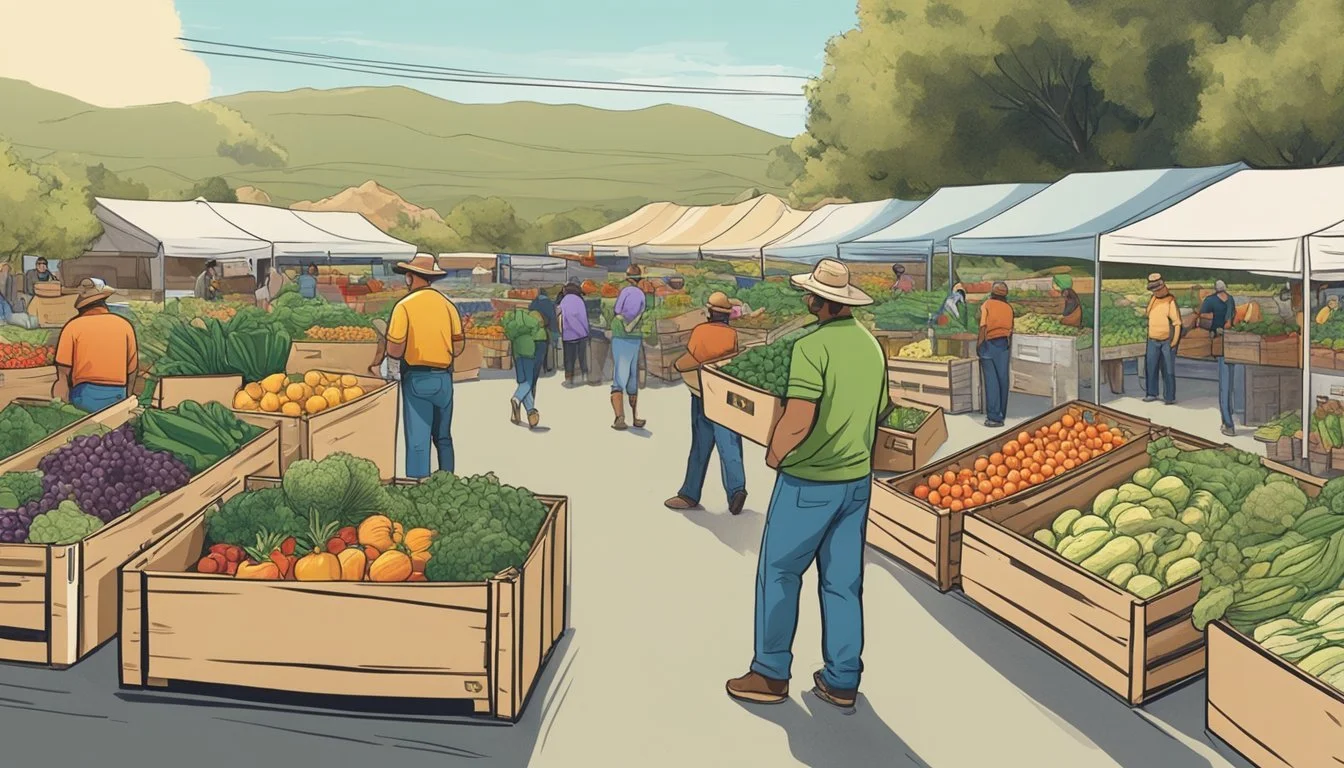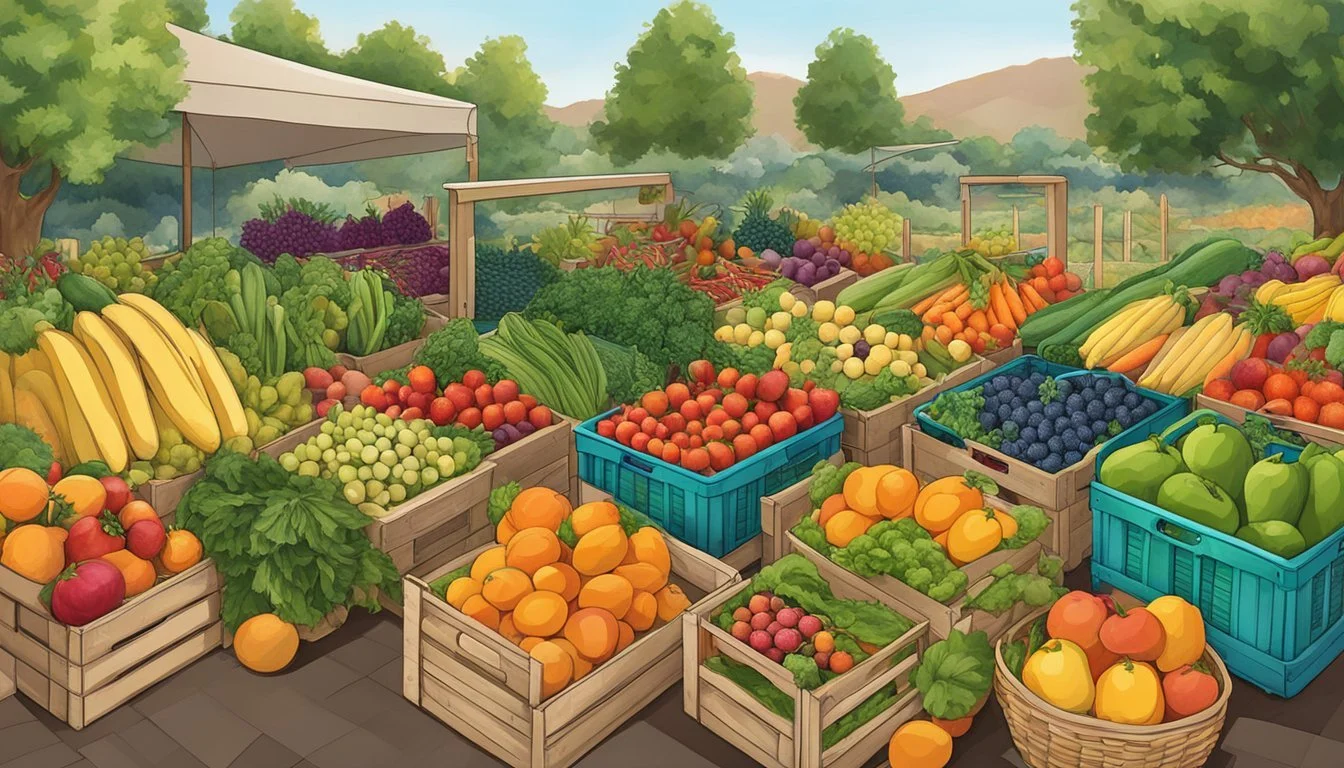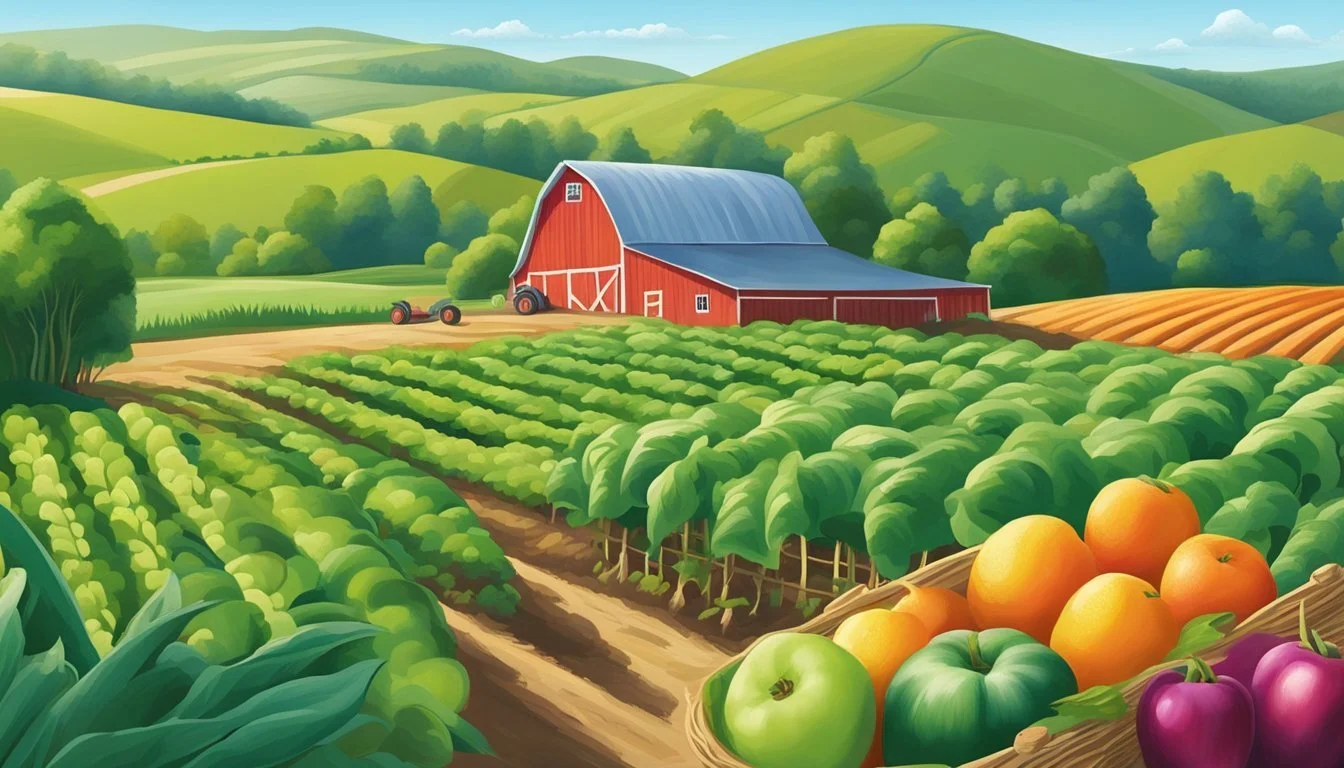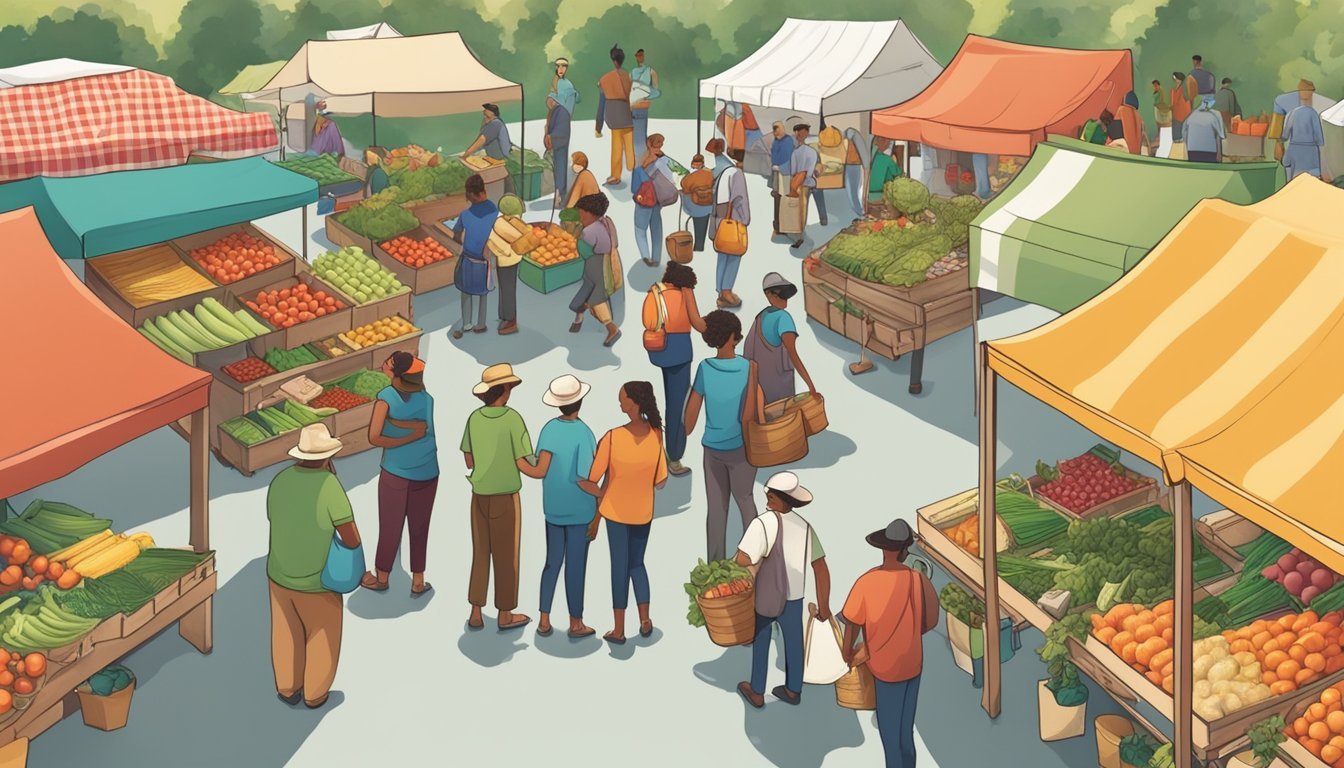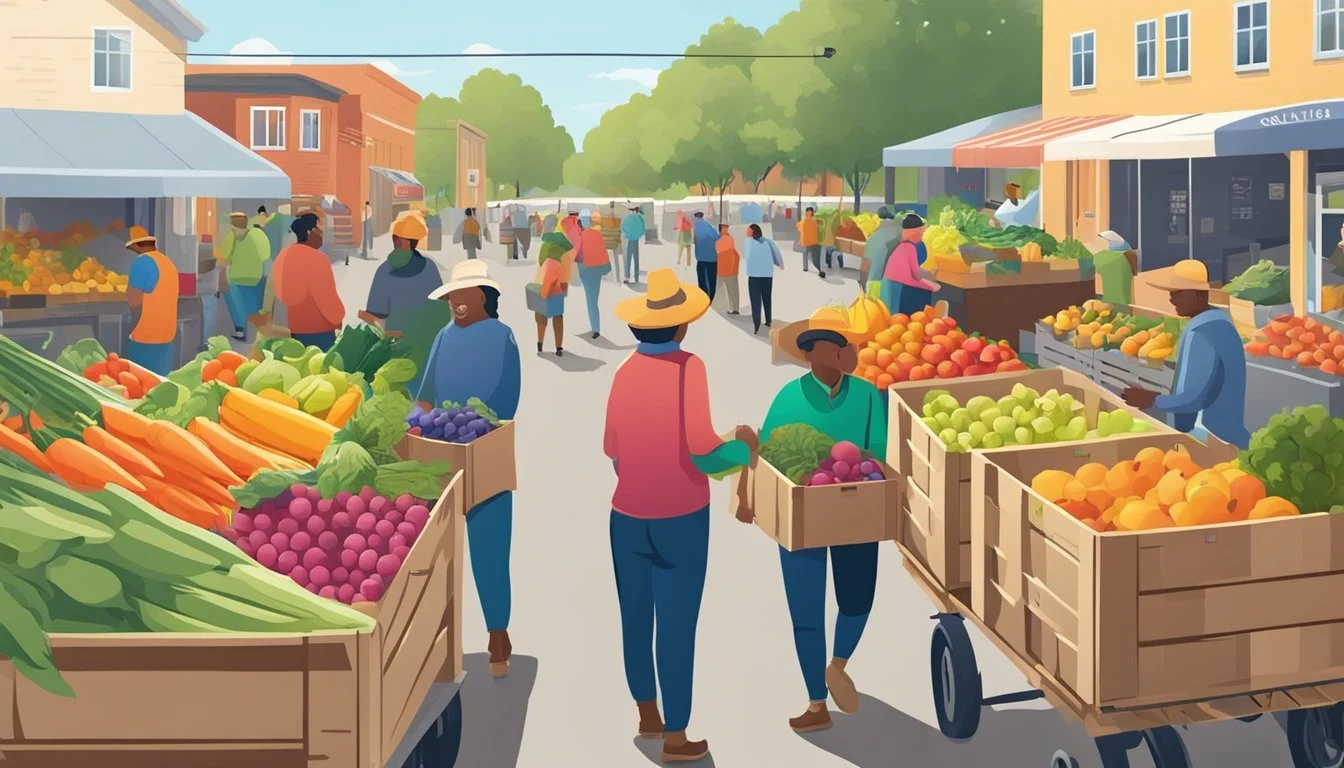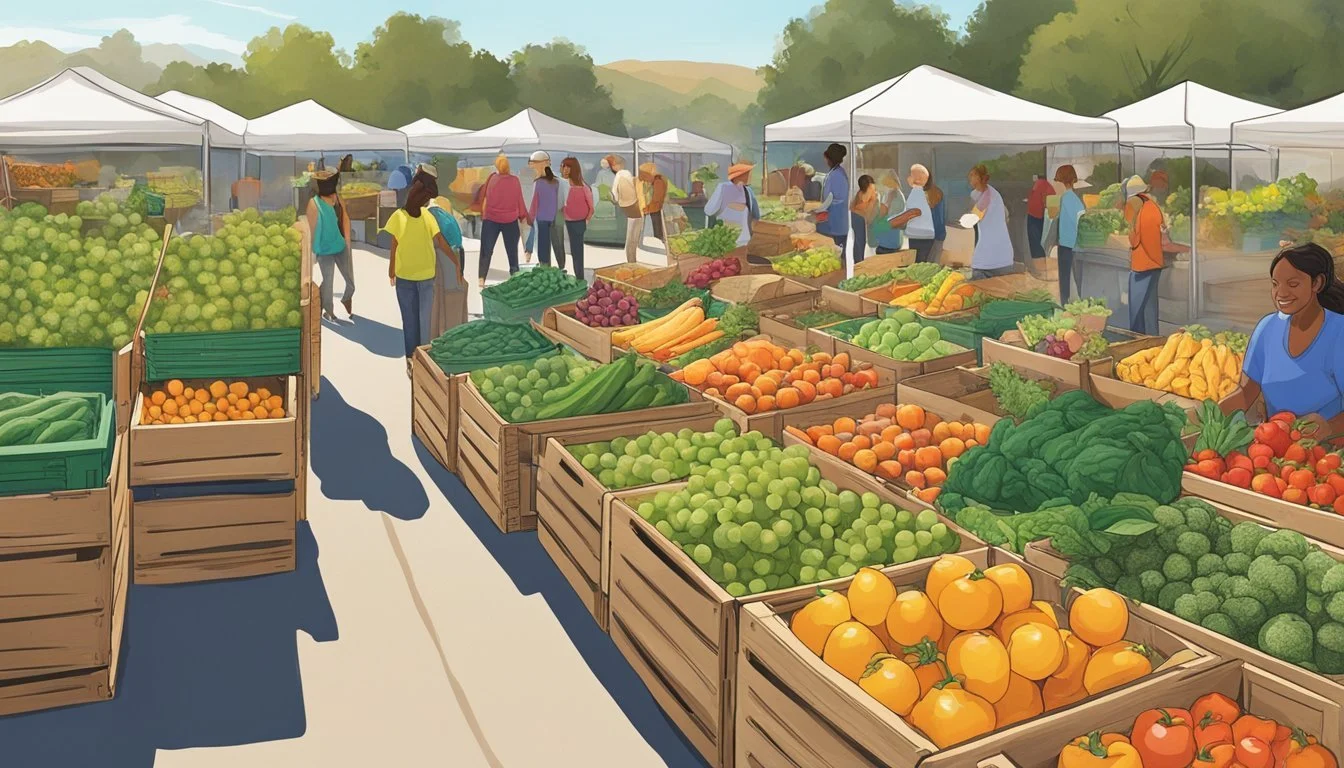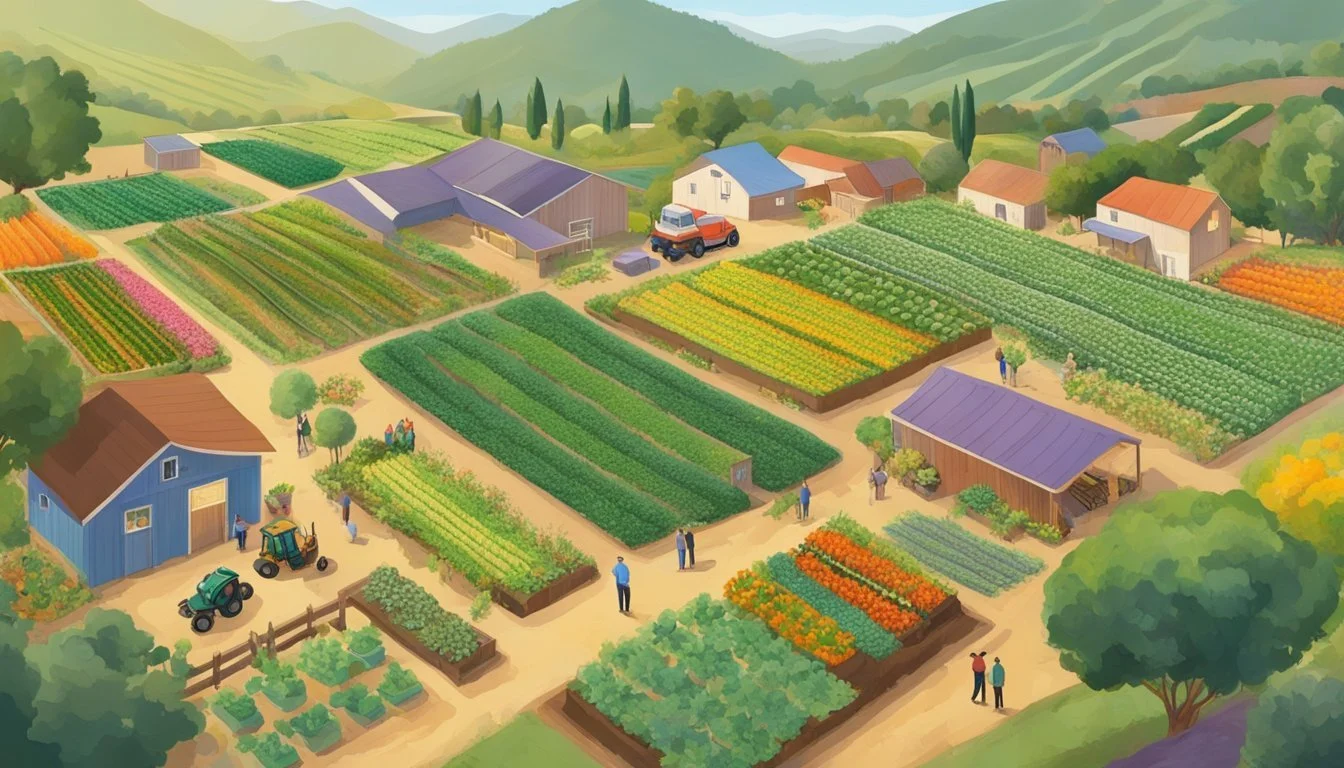Community Supported Agriculture (CSA) in Thousand Oaks, CA
An Overview of Local Farm Partnerships
Community Supported Agriculture, commonly referred to as CSA, is a model of food production and distribution that connects farmers directly with consumers. In Thousand Oaks, California, and its surrounding areas, CSA programs are burgeoning, enabling residents to purchase "shares" of a farm's harvest. These shares often come in the form of weekly or bi-weekly boxes of locally grown, seasonal produce, fostering a closer relationship between consumers and the food they eat.
By adopting the CSA model, Thousand Oaks residents invest in their local agricultural community, which in turn supports sustainable farming practices and boosts the local economy. CSA members receive fresh, high-quality produce while contributing to the viability of small farms and the availability of locally sourced food options. Consumers are not merely buying food; they are actively participating in a cycle of mutual benefit with local farmers.
CSA programs in the Thousand Oaks area typically offer a diversity of fresh fruits and vegetables. Some CSAs may expand their shares to include other farm products, such as eggs, dairy, and honey. The Abundant Table, for example, is a local cooperative farm that operates its CSA almost year-round, offering pesticide-free produce and occasionally sourcing from other local farms to provide a wider variety of items. Through such programs, Thousand Oaks residents have the opportunity to deeply connect with the region's agricultural roots, encouraging a more environmentally conscious and health-oriented lifestyle.
Understanding CSA
Community Supported Agriculture represents a partnership between local farms and community members, fostering a sustainable relationship. This section will elucidate the CSA model and its specific history within Thousand Oaks, CA.
What Is CSA?
Community Supported Agriculture, or CSA, is a model where individuals purchase a "share" from a local farm. In return, they receive a portion of the farm's produce throughout the growing season. This arrangement benefits the farms by providing them with upfront revenue and reducing the risk of unsold produce. At the same time, members enjoy fresh, seasonal produce and establish a direct connection with their food source.
Core Elements of a CSA:
Pre-paid shares: Members pay in advance for a season's worth of agricultural products.
Regular distributions: Farms deliver a box of goods to members, typically on a weekly or bi-weekly basis.
Seasonal variety: The contents of each box reflect the farm's current harvest, providing a range of produce over the season.
History of CSA in Thousand Oaks, CA
While the CSA model is not exclusive to any single area, it has unique manifestations in local contexts. In Thousand Oaks, CA, CSA farms have emerged as a response to the community’s desire for locally-sourced, sustainable food options. The city and surrounding areas have seen an increase in CSA farms, which are often celebrated for preserving green space and supporting local economies.
Local Milestones:
First CSA-established: The roots of CSA in Thousand Oaks trace back to the early 2000s when the first CSA farms began operations.
Growth: Over the years, the number of CSA farms has grown, in part due to increased community interest in sustainable and local agriculture.
By engaging with CSA, the community of Thousand Oaks has developed a resilient local food system and contributed to a stronger, more transparent relationship between consumers and their food sources.
Benefits of Joining a CSA
Joining a Community Supported Agriculture (CSA) program in Thousand Oaks, CA, offers tangible gains for consumers and growers alike. Members receive a wealth of fresh, seasonal produce while contributing to the sustainability and resilience of local farming operations.
Supporting Local Farmers
When individuals join a CSA, they play a critical role in the livelihood of local farmers. The upfront payments made by CSA members provide farmers with essential early season capital, enabling them to plan the harvest and cover initial operational costs.
Financial Stability: CSA memberships contribute directly to the financial security of farmers by ensuring a reliable market for their harvest.
Community Connection: Farmers gain opportunities to foster stronger relationships with their local community, allowing for a supportive, mutually beneficial ecosystem.
Receiving Fresh Produce
Consumers benefit significantly from the direct access to fresh, locally-sourced vegetables and organic fruit. The produce members receive is often harvested within a day or two of delivery, ensuring optimal freshness and flavor.
Quality: Harvested at peak ripeness, CSA produce offers superior quality compared to many store-bought options.
Health Benefits: Fresh, nutritious produce supports a healthy diet, and members often discover new vegetables and fruits, diversifying their consumption and culinary experiences.
Environmental Advantages
CSAs contribute to more sustainable agricultural practices, which have several environmental benefits.
Lower Carbon Footprint: Localized food distribution reduces transportation distances, leading to lower greenhouse gas emissions.
Sustainable Practices: CSA farms often employ organic and eco-friendly farming techniques, minimizing the impact on the environment and promoting biodiversity.
How CSA Works
Community Supported Agriculture (CSA) in Thousand Oaks operates on a straightforward premise where the community directly supports local farms, thereby ensuring a consistent source of seasonal produce. Members become integral to the farm's operation through their commitment.
Membership Structure
Membership in a CSA begins with individuals or families purchasing a share of the farm's upcoming harvest. These members essentially buy into the farm at the start of the planting season. The commitment gives the farm upfront capital to cover the initial costs of seeds and labor. In Thousand Oaks, some farms offer a variety of membership levels depending on the amount of produce a member anticipates needing.
Seasonal Share Options
Shares are fundamentally seasonal, generally aligning with traditional growing seasons. In Thousand Oaks, a typical CSA farm offers summer, fall, winter, and spring shares, each delivering a diverse array of fruits and vegetables prolific during that time. Shares might also include farm products such as eggs, honey, or herbs, depending on the farm's offerings.
Distribution Methods
CSA Farms in Thousand Oaks tend to distribute their shares through two primary methods: pickup and delivery. Most commonly, members pick up their designated box at a set pick-up location, which may be the farm itself or a central community spot. Some farms also offer home delivery services, either incorporated into the share cost or as an additional fee, providing convenience for the members. Distribution frequency varies, although weekly or bi-weekly are the most common intervals.
Participation in CSA
In Thousand Oaks, CA, participating in a Community Supported Agriculture (CSA) program establishes a direct relationship between community members and local farmers. This participation entails a commitment to support local agriculture and integrates various opportunities for engagement and support.
Becoming a CSA Member
A community member becomes a CSA member by purchasing a "share" from a local farm, which is a seasonal subscription to fresh produce. In Thousand Oaks, CSA programs may offer cost-offset options for low-income families, enhancing access to nutritious food while bolstering community ties.
Community Engagement
CSA membership goes beyond regular food deliveries; it fosters a deeper relationship between the community and the farmers. Members often have the chance to interact through events and have a voice in crop selection. This dynamic engenders a mutualistic relationship, strengthening community bonds and ensuring the success of the CSA program.
Volunteering Opportunities
Volunteer activities such as planting, harvesting, or distributing produce are integral to some CSA models. These roles afford members a firsthand experience of the agricultural process and further the CSA program's mission by engaging volunteers in the operational aspects. Such involvement benefits both the individual volunteers and the CSA community as a whole.
CSA Offerings in Thousand Oaks
Community Supported Agriculture (CSA) programs in Thousand Oaks provide an opportunity for residents to partake in seasonal, fresh produce directly from local farms. These offerings encourage sustainable agriculture and support the local community through various subscriptions.
Types of Produce Available
Subscribers to Thousand Oaks CSAs can expect a wide array of vegetables, typically including leafy greens, root vegetables, and seasonal specialties. Fruit options often range from citrus to stone fruits, depending on the time of year. CSAs in this region pride themselves on the variety and freshness of their produce, often harvested the same day or just prior to delivery.
Vegetables: Lettuce, carrots, kale, tomatoes
Fruit: Apples, strawberries, oranges, peaches
Specialty Items and Add-Ons
In addition to standard produce, CSAs may offer specialty items or add-ons to their shares, enhancing the CSA experience with a diversity of local products.
Eggs: Often available as an add-on, these eggs are known for being fresh and coming from local free-range chickens.
Meat: Some CSAs provide an option to receive locally raised meats, ranging from chicken to pork and beef.
Flowers and Berries: Seasonal flowers and an assortment of berries are also a common feature in CSA shares.
Subscribers may find these offerings at local farmers markets, or they may choose to receive them through direct delivery, depending on the individual CSA's operating model. These additions can provide a comprehensive culinary experience beyond the typical fruit and vegetable selection.
Seasonal Eating
Seasonal eating in Thousand Oaks, CA, revolves around the local harvest calendar, which influences the fresh produce available for cooking. It emphasizes consuming food at its peak flavor and nutritional content, aligning closely with the cycles of nature.
Planning for Seasons
In Thousand Oaks, residents plan their meals according to the changing seasons. In winter, they focus on hearty winter vegetables like kale, squash, and root vegetables, while stone fruit and other warm-season crops are prominent in summer. They tailor their food selection to the most abundant crops to get the best of each harvest. For instance, citrus fruits are typically at their prime in late winter and early spring, so they are often incorporated into meals during this time.
Seasonal produce calendar for Thousand Oaks:
Season Produce Spring Asparagus, Strawberries, Citrus fruits Summer Stone fruit, Tomatoes, Herbs Fall Apples, Pears, Leafy greens Winter Root vegetables, Winter squash, Kale
By aligning their culinary plans with this schedule, they ensure a diet that is not only fresh and tasty but also sustainable and supportive of local agriculture.
Recipes and Cooking Tips
Cooking with seasonal produce encourages creativity in the kitchen. Thousand Oaks' residents take advantage of the freshest ingredients, often incorporating herbs like basil, parsley, and thyme for added flavor. They utilize recipes that highlight the natural taste of the produce, rather than overpowering it with heavy sauces or spices.
For winter vegetables, they might roast them to concentrate their flavors and serve alongside a protein.
Summer's stone fruits are perfect for grilling or in fresh salads.
Quick tips for cooking seasonal produce:
Use bold flavors like garlic and chili with greens.
Add fresh herbs towards the end of cooking to preserve their flavor.
Roast winter vegetables to caramelize their natural sugars.
Use ripe stone fruits in both sweet and savory dishes for a burst of summer flavor.
CSA Management Practices
In Thousand Oaks, CA, Community Supported Agriculture (CSA) employs specific management practices to ensure the longevity and sustainability of farming operations. These practices focus on sustainable farming, soil health, and climate adaptability, which are critical for the success of CSAs in the region.
Sustainable Farming Techniques
CSAs in Thousand Oaks adopt a range of sustainable farming techniques to mitigate their environmental impact and ensure a stable food supply. Crop rotation and diversification are employed to maintain ecological balance and prevent soil depletion. In practice, farms rotate between various crops like vegetables, grains, and legumes to optimize nutrient use and break pest cycles. Additionally, cover cropping is a common practice where non-harvested crops are grown to protect and enrich the soil.
Building Soil Health
The foundation of any successful farm is its soil health. CSA farmers in California prioritize organic matter enrichment and minimal tillage to enhance the fertility and structure of the land. They often incorporate compost and aged manure to increase soil organic matter, which improves water retention and nutrient availability. Soil testing is also a critical component, guiding farmers in precise nutrient management and avoiding over-fertilization.
Adapting to Climate Challenges
California's weather presents unique challenges to CSA farms, requiring adaptive management strategies to cope with drought and other climate-related variables. Farmers implement efficient irrigation systems, such as drip irrigation, to conserve water. They also use mulching to retain soil moisture and reduce irrigation demands. Moreover, the selection of drought-resistant crop varieties helps maintain productivity even during periods of limited water supply.
Farms are increasingly employing weather monitoring systems to make informed decisions about planting and harvesting times, optimizing their operations to work with, rather than against, the climate.
Economic Aspect of CSA
Community Supported Agriculture (CSA) in Thousand Oaks, CA, presents unique economic implications. The model influences both consumer expenses and the local farming economy.
Cost Considerations
Consumers participating in CSA programs pay for a season's worth of produce upfront. This lump sum can vary but typically ranges between $500 and $700 for a weekly share lasting about 25 weeks. While the initial cost may appear high, members receive fresh, locally sourced food, often balancing out against retail pricing over time. By paying in advance, consumers help cover the anticipated costs of farm operation, including seeds, equipment maintenance, and labor.
Supporting Farming Economy
CSAs directly benefit the local economy by ensuring that income remains within the community. Here's how CSA impacts the farming economy:
Stable Income: Farmers receive payment at the beginning of the growing season, providing them with a stable income and reducing financial risks associated with fluctuating market prices.
Investment in Local Food: The funds help invest in the quality and sustainability of local food production.
Economic Support: CSA members support farmers by sharing the risks and benefits of food production, fortifying the local farming community against economic downturns.
Exploring CSA Networks
In Thousand Oaks, CA, Community Supported Agriculture (CSA) networks are pivotal for the sustainable growth and increased connectivity among local food systems. They leverage collaborative efforts, research, and innovations to strengthen the reach and efficacy of CSA programs.
CSA Innovation and Growth
The CSA Innovation Network serves as a vital platform for fostering growth and development within the realm of CSA programs. It acts as a repository for best practices, pioneering models, and strategic tools designed to advance local agriculture. In Thousand Oaks, local farmers and CSA advocates utilize this network to exchange ideas, enhancing their CSA models to cater to the evolving needs of the community. With agriculture being a cornerstone of the region, such innovations are instrumental in ensuring the vitality and resilience of local CSA programs.
Networking and CSA Communities
Within the network of CSA in Thousand Oaks, sharing experiences and resources is essential for building robust community-supported agriculture programs. Networking events and CSA community meet-ups are common, where stakeholders can collaborate to address challenges and share successes. This collaboration often extends to research initiatives that aim to analyze member data and consumer preferences, to optimize the value delivered through CSA shares. Such networking efforts not only improve the operational aspects of CSAs but also foster a sense of solidarity among members, reinforcing the importance of a networked community approach to agriculture.
Membership Commitment
When individuals become members of a Community Supported Agriculture (CSA) program in Thousand Oaks, CA, they enter into a relationship based on mutual commitment. Members purchase a share, actively accepting both responsibility and partnership with the farm throughout the season.
Understanding Your Role
A CSA member commits to supporting a local farm for an entire growing season by purchasing a share upfront. This transaction signifies a pledge, binding the member to the farm's seasonal ebb and flow. The member's responsibilities include:
Payment: Provide financial support before the season begins.
Pick-up: Regularly collect their share from designated locations.
Communication: Stay informed about farm updates and share logistics.
Sharing Risks and Rewards
Membership in a CSA entails a shared journey with the farmer:
Risk: Members are informed that agriculture is subject to variables like weather and pests, which can affect crop yield and thus their shares.
Reward: Conversely, during abundant harvests, members enjoy a larger variety of produce or increased quantities in their shares.
In this partnership, the risk and reward of farming are collective, fostering a deep connection between the members and their food source.
FAQs About CSA
What is CSA?
Community Supported Agriculture (CSA) is a model where consumers purchase subscriptions, or “shares,” from local farms in advance of the growing season. These shares typically entitle them to a weekly or bi-weekly delivery or pick-up of fresh produce and other farm products.
How does a share work?
A share consists of a portion of the farm's harvest, available to members at designated times. The size and content of the share may vary based on the farm's offerings and the season.
Can SNAP benefits be used for CSA?
Yes, some CSA programs accept SNAP (Supplemental Nutrition Assistance Program) benefits for payment, making fresh, local produce more accessible to a broader community.
Are CSAs connected to farmers markets?
While CSAs and farmers markets both support local agriculture, they operate differently. CSAs involve a direct subscription with a farm, whereas farmers markets involve purchasing items from various vendors on market days.
Where can one find news and updates about CSA?
To stay informed, check local agricultural websites, sign up for newsletters from local farms, or follow them on social media for the latest news on CSA subscriptions and offerings.
What is the commitment for joining a CSA?
Joining a CSA usually involves a seasonal commitment, supporting the farmer throughout the growing season. Terms vary by farm, so potential members should inquire with their local CSA for specifics.
CSA Advocacy and Future Outlook
Community Supported Agriculture (CSA) has firmly taken root in Thousand Oaks, CA, with a promising future that hinges on proactive advocacy and the tracking of emerging trends in CSA programs.
Promoting Local CSAs
Local CSAs in Thousand Oaks have benefitted from strong advocacy efforts that focus on education and community engagement. Advocates educate potential members on the benefits of joining a CSA, such as receiving fresh, locally produced food and supporting the local economy. They also work to forge strong relationships between farmers and the local community, ensuring that both can thrive. These efforts are often coordinated by community networks or through partnerships with local businesses and farmers' markets.
Public Events and Workshops: To promote local CSAs, advocates host events and workshops that underscore the importance of sustainable agriculture and local farming. These gatherings act as platforms for CSA farmers to connect directly with consumers, fostering a sense of community while also providing education on the ecological benefits of CSA models.
Marketing and Outreach: There is a concerted effort in marketing and outreach to expand CSA membership. This includes the use of social media campaigns, local food blogs, and community newsletters that highlight the seasonal offerings of CSAs and share success stories of sustainable farming practices.
Trends in CSA Programs
The CSA landscape in Thousand Oaks is influenced by several prevailing trends that point to the programs' adaptability and growing consumer interest.
Diversification of Product Offerings: CSAs are expanding beyond traditional produce boxes to include a wider variety of products. Some have begun offering add-on items such as dairy, meats, eggs, and artisanal goods, catering to a broader range of consumer preferences and dietary needs.
Technology Integration: A notable trend in CSA programs is the increased use of technology to streamline operations. This includes online subscription services, payment processing, and CSA management software that makes it easier for consumers to sign up and for farmers to manage memberships and deliveries.
Tailored Shares and Flexibility: Recent patterns indicate a shift towards more personalized CSA shares, where members can have some influence over the contents of their deliveries. Flexible subscription models are also on the rise, allowing for seasonal or occasional memberships to accommodate varied consumer lifestyles.
In summary, the advocacy for local CSAs in Thousand Oaks aims to build robust connections between producers and consumers, while staying abreast of trends such as diversified offerings and technological advancements are shaping the future of these community supported agriculture programs.


